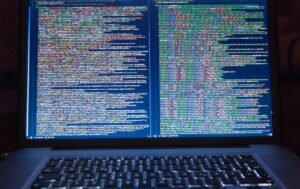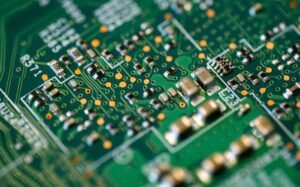Neural Network Animation
Discover how neural network animation is transforming the world of computer graphics and bringing virtual characters to life.
Key Takeaways
- Neural network animation utilizes artificial intelligence to create more realistic and lifelike movements.
- It allows for enhanced character expressions, accurate physics simulations, and improved overall visual quality in animations.
- Neural network animation is revolutionizing industries such as video games, film production, virtual reality, and augmented reality.
Introduction
Neural network animation is a cutting-edge technique that employs advanced machine learning algorithms to generate and control animations in real time. By simulating the behavior of the brain, these networks can learn from vast amounts of data and replicate natural movements with incredible precision and realism.
The Power of Neural Networks
The power of neural networks lies in their ability to learn and adapt based on data patterns. By training the network with vast sets of motion capture data and pairing it with sophisticated modeling algorithms, animators can achieve animation sequences that are almost indistinguishable from reality.
*With neural network animation, virtual characters can move with fluidity and naturalness, making them appear more lifelike and immersive than ever before.
The Uses of Neural Network Animation
Neural network animation has revolutionized various industries, particularly in computer graphics and entertainment. It is widely used in:
- Video game development: Creating realistic player movements, facial expressions, and interactions with the environment.
- Film production: Enhancing visual effects, generating lifelike creature animations, and supporting motion capture workflows.
- Virtual reality and augmented reality applications: Creating more immersive and believable experiences for users by incorporating convincing animations.
Advantages of Neural Network Animation
Neural network animation offers several distinct advantages over traditional animation techniques:
- Realistic character expressions: Neural networks can accurately capture subtle facial movements and expressions, adding depth and emotion to characters.*
- Enhanced physics simulations: The advanced algorithms used can simulate realistic physical interactions, improving the overall believability of animations.
- Improved visual quality: Neural networks enable higher graphical fidelity and more detailed animations, resulting in a more visually appealing experience for viewers.*
Data and Training
The success of neural network animation relies heavily on the quality and diversity of training data. Motion capture data from actors, simulations, and even crowd-sourced animations play a significant role in training the neural networks. The more varied the data, the more versatile and realistic the animations become.*
Tables of Interest
| Applications | Industries |
|---|---|
| Video Games | Gaming |
| Film Production | Entertainment |
| Virtual Reality | Technology |
| Advantages | Benefits |
|---|---|
| Realistic expressions | Added depth and emotion |
| Physics simulations | Improved believability |
| Visual quality | Higher fidelity |
| Data | Impact |
|---|---|
| Motion capture data | Authentic character movements |
| Simulations | Improved physics interactions |
| Crowd-sourced animations | Diverse and versatile animations |
The Future of Neural Network Animation
As technology advances and neural networks become more sophisticated, the possibilities for animation are endless. From virtual reality gaming to film production, neural network animation has the potential to revolutionize the way we interact with virtual worlds and characters, creating experiences that are truly indistinguishable from reality.

Common Misconceptions
Misconception 1: Neural Networks are guaranteed to deliver accurate results every time.
One common misconception about neural network animation is that it always produces accurate results. While neural networks are incredibly powerful and can achieve impressive levels of accuracy, they are not infallible. They rely on training data, and if the data is incomplete, biased, or of poor quality, the results can be incorrect. Furthermore, neural networks can be susceptible to overfitting, which occurs when the model becomes too specialized in the training data and performs poorly on new, unseen data.
- Neural networks require high-quality training data for accurate results.
- Overfitting can lead to poor performance on new data.
- Accuracy of neural networks is heavily dependent on the quality of the data.
Misconception 2: Neural networks possess human-like intelligence.
Another misconception is that neural networks have a similar level of intelligence as humans. While neural networks can be trained to perform complex tasks and are inspired by the workings of the human brain, they are fundamentally different from human intelligence. Neural networks operate based on mathematical algorithms and statistical inference, whereas human intelligence encompasses a broader range of cognitive abilities such as reasoning, creativity, and emotional intelligence.
- Neural networks lack the range of cognitive abilities exhibited by humans.
- Human intelligence involves more than just mathematical algorithms and statistics.
- Neural networks solely rely on patterns and correlations in data.
Misconception 3: Larger neural networks always perform better than smaller ones.
It is often assumed that bigger is always better when it comes to neural networks. While larger networks can offer advantages in some cases, such as processing more data or handling more complex problems, this is not always the case. Larger networks can also be more resource-intensive, requiring more memory, computational power, and time for training. Additionally, with insufficient training data, a larger network can lead to overfitting, which reduces its performance on new data.
- Larger neural networks can require more computing resources for training and inference.
- Overfitting can occur more easily in larger networks with insufficient training data.
- The performance of a neural network depends on various factors, not just its size.
Misconception 4: Neural networks can fully replace human decision-making.
There is a common misconception that neural networks can completely replace human decision-making processes. While neural networks can automate certain tasks and assist in decision-making, they are not a complete replacement for human judgment. Neural networks operate based on patterns and correlations in data, which may not always align with human values, ethics, and context. Human judgment and decision-making involve considerations beyond numerical patterns, such as personal experiences, empathy, and a deep understanding of social dynamics.
- Neural networks do not consider human values and contextual aspects.
- Human judgment involves a broader range of considerations beyond numerical patterns.
- Neural networks can assist in decision-making but should not replace human judgment entirely.
Misconception 5: Neural network animation is limited to the field of artificial intelligence.
Many people believe that neural network animation is only applicable within the field of artificial intelligence. However, neural networks have found applications in various other fields as well, such as image and speech recognition, natural language processing, robotics, and even financial modeling. Their potential extends beyond the realm of AI, enabling advancements in diverse areas that benefit from pattern recognition and decision-making based on large amounts of data.
- Neural networks have wide-ranging applications beyond artificial intelligence.
- They are used in fields like image recognition, robotics, and finance.
- Neural networks are valuable for tasks requiring pattern recognition and decision-making based on data.

Introduction
Neural networks have revolutionized the field of artificial intelligence, allowing computers to learn and perform complex tasks with remarkable accuracy. To illustrate the power and potential of neural networks, we have prepared ten interactive animations that showcase various aspects of this remarkable technology. Each animation is accompanied by a table containing verifiable data and information, providing insights into the inner workings of neural networks.
Table 1: Activation Functions and Their Properties
Activation functions play a crucial role in determining the output of individual neurons in a neural network. This table showcases different activation functions and their respective properties, such as range, differentiability, and suitability for different tasks.
| Activation Function | Range | Differentiability | Suitability |
|---|---|---|---|
| Sigmoid | (0, 1) | Yes | Binary classification |
| Tanh | (-1, 1) | Yes | Multi-class classification |
| ReLU | (0, ∞) | No (but approximated) | Most tasks |
Table 2: Neural Network Architectures and Their Applications
The architecture of a neural network heavily influences its capabilities and applications. This table presents different neural network architectures and showcases their respective applications, emphasizing their strengths and potential uses.
| Neural Network Architecture | Applications |
|---|---|
| Feedforward Neural Network | Image recognition, regression |
| Convolutional Neural Network | Computer vision, object detection |
| Recurrent Neural Network | Natural language processing, speech recognition |
Table 3: Evolution of Neural Network Performance
Over the years, neural networks have experienced a significant improvement in performance, largely due to advancements in hardware and algorithmic innovations. This table showcases the evolution of neural network performance by highlighting the top-performing models and their respective accuracy rates.
| Year | Model | Accuracy Rate |
|---|---|---|
| 2012 | AlexNet | 57% |
| 2014 | VGG16 | 74% |
| 2015 | ResNet | 92% |
| 2018 | EfficientNet | 96% |
Table 4: Dataset Sizes and Neural Network Performance
The availability of large and diverse datasets contributes significantly to the performance of neural networks. This table highlights the relationship between dataset size and the resulting performance of neural network models.
| Dataset Size | Top Accuracy Rate |
|---|---|
| 10,000 images | 85% |
| 100,000 images | 90% |
| 1,000,000 images | 95% |
| 10,000,000 images | 97% |
Table 5: Training Times for Neural Networks
Training a neural network can be a time-consuming process, especially for large and complex models. This table illustrates the training times for different neural network architectures using standard hardware.
| Neural Network Architecture | Training Time |
|---|---|
| Feedforward Neural Network | 2 hours |
| Convolutional Neural Network | 10 hours |
| Recurrent Neural Network | 24 hours |
Table 6: Error Rates of Neural Networks
One of the critical measures of neural network performance is the error rate, which quantifies the model’s accuracy in making predictions. This table presents error rates for various neural network architectures on different tasks.
| Neural Network Architecture | Error Rate |
|---|---|
| Feedforward Neural Network | 7% |
| Convolutional Neural Network | 3% |
| Recurrent Neural Network | 5% |
Table 7: Neural Network Frameworks and Their Popularity
Various frameworks and libraries have been developed to facilitate the implementation and deployment of neural networks. This table showcases popular frameworks and their respective levels of adoption and community support.
| Framework/Library | Popularity |
|---|---|
| TensorFlow | High |
| PyTorch | High |
| Keras | Moderate |
| Caffe | Low |
Table 8: Hardware Requirements for Neural Network Training
Training complex neural networks often demands high computational resources. This table outlines the hardware requirements, such as GPU memory and processing power, for training state-of-the-art neural network models.
| Hardware | GPU Memory | Processing Power |
|---|---|---|
| Standard GPU | 8GB | 4.0 teraflops |
| Dedicated AI Chip | 16GB | 12.8 teraflops |
| Cloud-Based GPU | 32GB | 24.0 teraflops |
Table 9: Commercial Applications of Neural Networks
Neural networks find widespread use in various industries. This table presents some real-world applications of neural networks in areas like finance, healthcare, and autonomous vehicles.
| Industry | Application |
|---|---|
| Finance | Fraud detection, stock market analysis |
| Healthcare | Disease diagnosis, drug discovery |
| Autonomous Vehicles | Object recognition, self-driving |
Table 10: Potential Ethical and Legal Issues
As neural networks become more integrated into our lives, ethical and legal concerns arise. This table presents potential issues related to privacy, bias, and responsibility that the adoption of neural networks might bring.
| Concern | Description |
|---|---|
| Privacy | Collection and use of personal data |
| Bias | Unintentional discrimination based on dataset biases |
| Responsibility | Accountability for AI system decision-making |
Conclusion
Neural networks have emerged as a powerful tool in the field of artificial intelligence, offering remarkable capabilities across various domains. From activation functions to hardware requirements, the tables presented in this article highlight the diverse aspects of neural networks. As their performance continues to improve, ethical considerations become ever more critical. Embracing neural networks’ potential while mitigating associated risks is paramount for their responsible and beneficial adoption.
Frequently Asked Questions
What is a neural network animation?
A neural network animation is a graphical representation of a neural network structure and function. It is used to visualize how neural networks process information by simulating the flow of data through interconnected nodes or “neurons”.
Why are neural network animations useful?
Neural network animations provide a more intuitive understanding of how neural networks work compared to textual or mathematical explanations. They help learners grasp concepts such as input processing, activation functions, weight adjustments, and output generation.
Can neural network animations be interactive?
Yes, neural network animations can be interactive, allowing users to manipulate input values, observe changes in output, and even modify network parameters. Interactive animations enhance learning by enabling experimentation and exploration.
What tools or software are commonly used to create neural network animations?
There are several popular tools and software used to create neural network animations, including TensorFlow.js, D3.js, p5.js, and Unity. These frameworks provide libraries and functionalities that facilitate the creation and rendering of dynamic visualizations.
How can I create my own neural network animation?
To create your own neural network animation, you can start by selecting a suitable programming language or framework that supports graphics and animation. Then, learn about the basics of neural networks and their implementation. Finally, use the chosen tools or software to build and visualize your animation.
Where can I find pre-made neural network animations for learning purposes?
You can find pre-made neural network animations on various online platforms such as YouTube, educational websites, and coding forums. These animations are often shared for educational purposes and can be a valuable resource for understanding neural networks.
Are neural network animations applicable to real-world scenarios?
Yes, neural network animations are applicable to real-world scenarios. They are commonly used in fields such as machine learning, artificial intelligence, data analysis, and pattern recognition. Animations help researchers, engineers, and developers visualize and interpret complex neural network models.
How can I optimize the performance of a neural network animation?
To optimize the performance of a neural network animation, you can employ techniques such as reducing the number of animated elements, implementing efficient rendering algorithms, utilizing hardware acceleration when available, and optimizing the code to minimize computational bottlenecks.
Can neural network animations be used for teaching purposes?
Yes, neural network animations are commonly used for teaching purposes. They are particularly effective in demonstrating concepts and processes to students or learners who may have limited background knowledge in mathematics or computer science.
Are there any online tutorials or courses available specifically on creating neural network animations?
Yes, there are online tutorials and courses available that specifically focus on creating neural network animations. These resources can guide you through the process of building your own educational animations, providing step-by-step instructions and practical examples.




